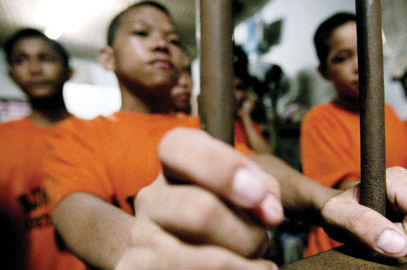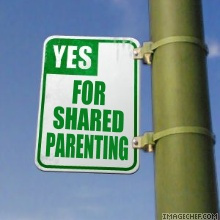
Many people marry expecting their life together to be full of bliss. However, the pressure of something as small as unpaid bills can send a marriage down the road to separation or divorce. In the article “How Common is Divorce and What are the Reasons?” a noted marriage scholar and therapist, Dr. William H. Doherty states, “In the United States, researchers estimate that 40%–50% of all first marriages, and 60% of second marriages, will end in divorce.”
Blockades to leaving a marriage, such as financial worries, fear of change, or preserving the traditional idea of the family structure can keep marriages together temporarily. Yet, if the relationship doesn’t improve, the barriers are usually not enough to keep the marriage together in the long run.
 There are many reasons why people separate or divorce. But, whatever the reasons are, one thing is for sure: children don’t cause or choose divorce or separation — parents do. According to the U.S. Census Bureau Statistical Abstract of the United States (1999), “Every year more than one million American children experience the divorce of their parents.”
There are many reasons why people separate or divorce. But, whatever the reasons are, one thing is for sure: children don’t cause or choose divorce or separation — parents do. According to the U.S. Census Bureau Statistical Abstract of the United States (1999), “Every year more than one million American children experience the divorce of their parents.”
Children flourish in warm, supportive, and stable environments where both parents are emotionally, physically and financially responsible for them. Therefore, divorce or separation can be difficult for children to cope with.
As mentioned in the article, “What are the Possible Consequences of Divorce for Children” by Dr. Judith S. Wallerstein a well-known divorce researcher, children’s experience of divorce is described in this way: “For a young child, psychologically, divorce is the equivalent of lifting a hundred-pound weight over the head. Processing all the radical and unprecedented changes—loss of a parent, loss of a home, of friends—stretches immature cognitive and emotional abilities to the absolute limit and sometimes beyond that limit.”
For children, trying to understand why their parents are getting a divorce, who they will live with, the school they will attend, or if the divorce of their parents is because of them (etc.), can leave them emotionally unbalanced.
 As of today, 17.8% of custodial parents are fathers and 5% of custody is granted to non-relatives, while mothers are still granted custody 77.2% of the time.
As of today, 17.8% of custodial parents are fathers and 5% of custody is granted to non-relatives, while mothers are still granted custody 77.2% of the time.
40% of mothers reported that they had interfered with the father’s visitation to punish their ex-spouse. [“Frequency of Visitation” by Sanford Braver, American Journal of Orthopsychiatry]
50% of mothers see no value in the fathers continued contact with his children. (Surviving the Breakup” by Joan Berlin Kelly)
The idea that 50 percent of divorced women see no value in a father’s presence in the family is astounding. Family expert Dianna Thompson says, “There should be safety guards to disallow this type of behavior. But in reality there are none. Family court is not a place where many fathers observe their rights; it’s where they lose them.”
If parents are in the middle of a nasty break-up or divorce and they do not want to do irreparable damage to their children, they must avoid destructive behaviors. Children should never be used as pawns or made to choose which parent they love most. That is not their job. The best parent for children will always be BOTH parents.
And yet, fatherlessness has become a national epidemic. The impact of fatherlessness can be seen in our homes, schools, hospitals and prisons. In short, fatherlessness is associated with almost every societal ill facing our country’s children.
 Youths in father-absent households have significantly higher odds of incarceration than those in mother-father families. Youths in father-absent households have significantly higher odds of incarceration than those in mother-father families. |
 There is significantly more drug and alcohol use among children in fatherless homes. There is significantly more drug and alcohol use among children in fatherless homes.
|
|
|
 Children from fatherless homes are more likely to drop out of school Children from fatherless homes are more likely to drop out of school |
It should be up to parents and the courts to do everything possible to see that children suffer as little as possible as a result of the decision to divorce or separate. Adults must remember, no matter what is happening between them and their significant other they must always put their children’s needs first. The future of our society lies in our children, and the key to that future rests primarily with stability within families. The only job a child should have is to grow up to be the best adult they can be. That is why, it is more important than ever to make sure that children remain the center of our lives.Families change when parents separate, but parenting does not end. Separation and divorce is a time to begin new parenting responsibilities and a new parenting relationship.
 Parents who choose shared parenting will ensure that both parents have equal access, rights, and responsibility to continue to be actively involved in the raising of their child(ren). While also avoiding thousands of dollars in legal fees that would be better spent on their children. Children’s difficulties don’t just play out exclusively in their homes and schools, but in their communities as well. You can go through the litany of pathologies that the government has to spend money to try to cure. Every single one of them, is linked to family breakdown, and parental absence. We can strengthen families and communities by fostering and encouragng the role of both parents being emotionally, physically, and economically involved in their children’s lives.
Parents who choose shared parenting will ensure that both parents have equal access, rights, and responsibility to continue to be actively involved in the raising of their child(ren). While also avoiding thousands of dollars in legal fees that would be better spent on their children. Children’s difficulties don’t just play out exclusively in their homes and schools, but in their communities as well. You can go through the litany of pathologies that the government has to spend money to try to cure. Every single one of them, is linked to family breakdown, and parental absence. We can strengthen families and communities by fostering and encouragng the role of both parents being emotionally, physically, and economically involved in their children’s lives.


 Girls from fatherless homes are more likely to become pregnant as teens.
Girls from fatherless homes are more likely to become pregnant as teens.